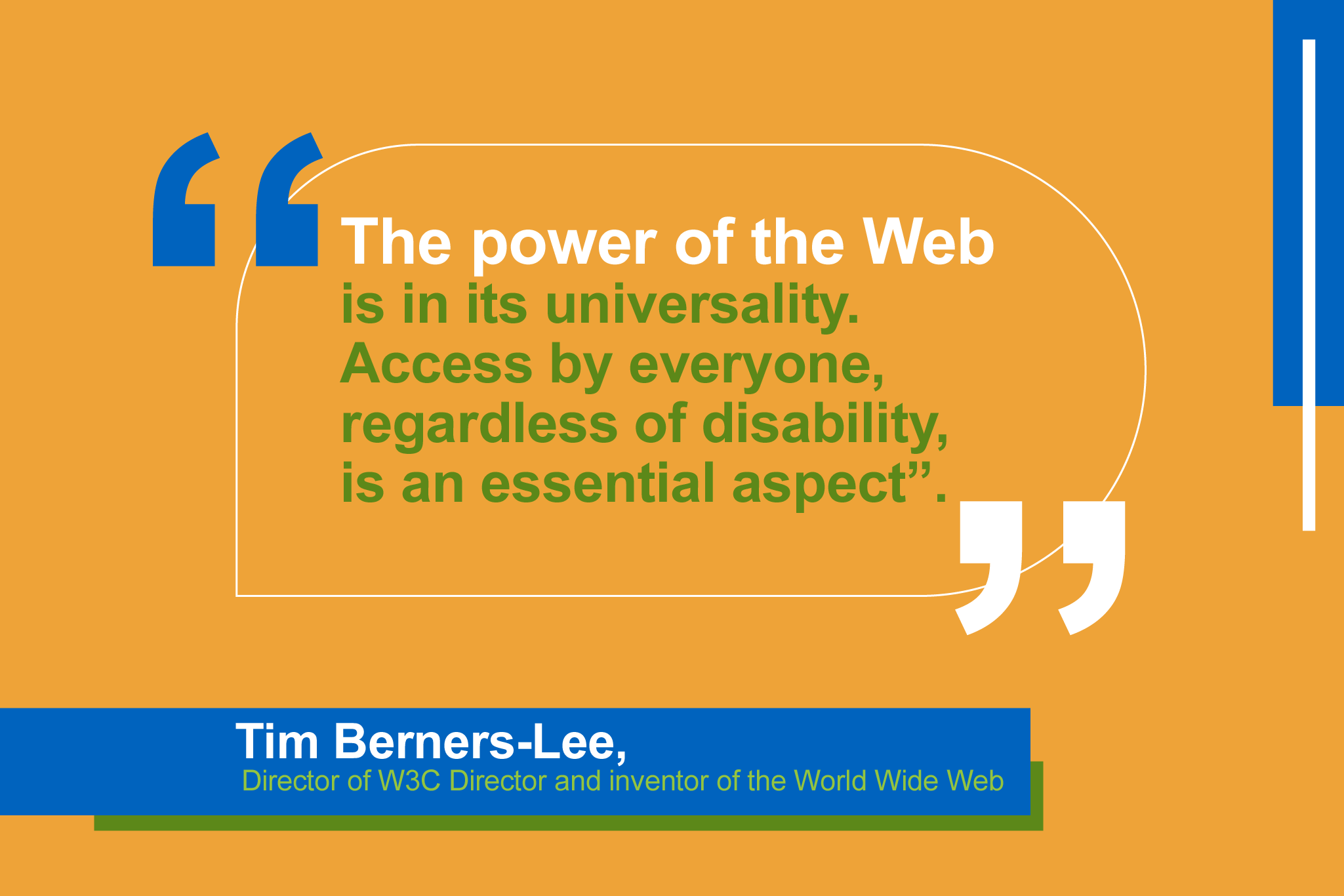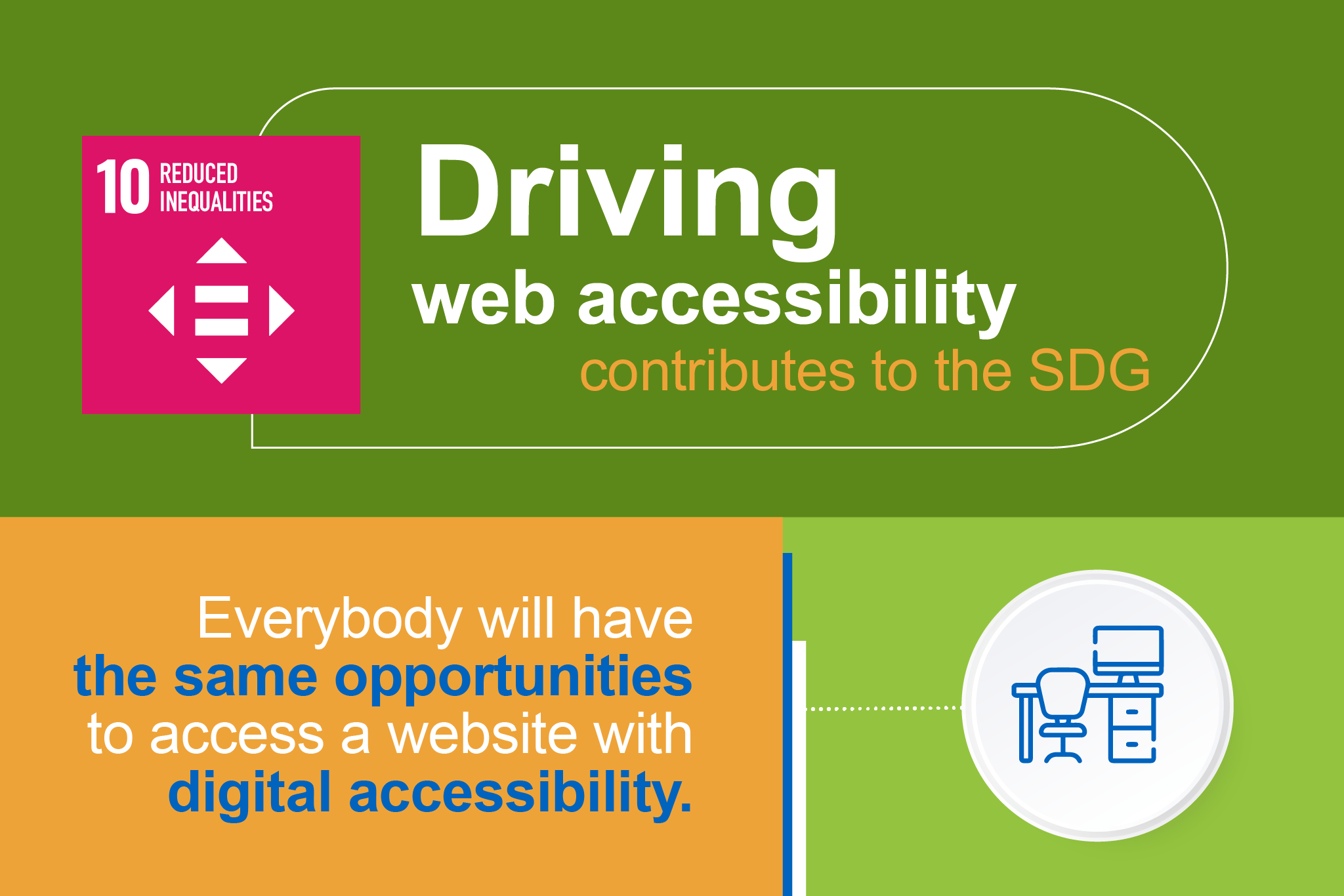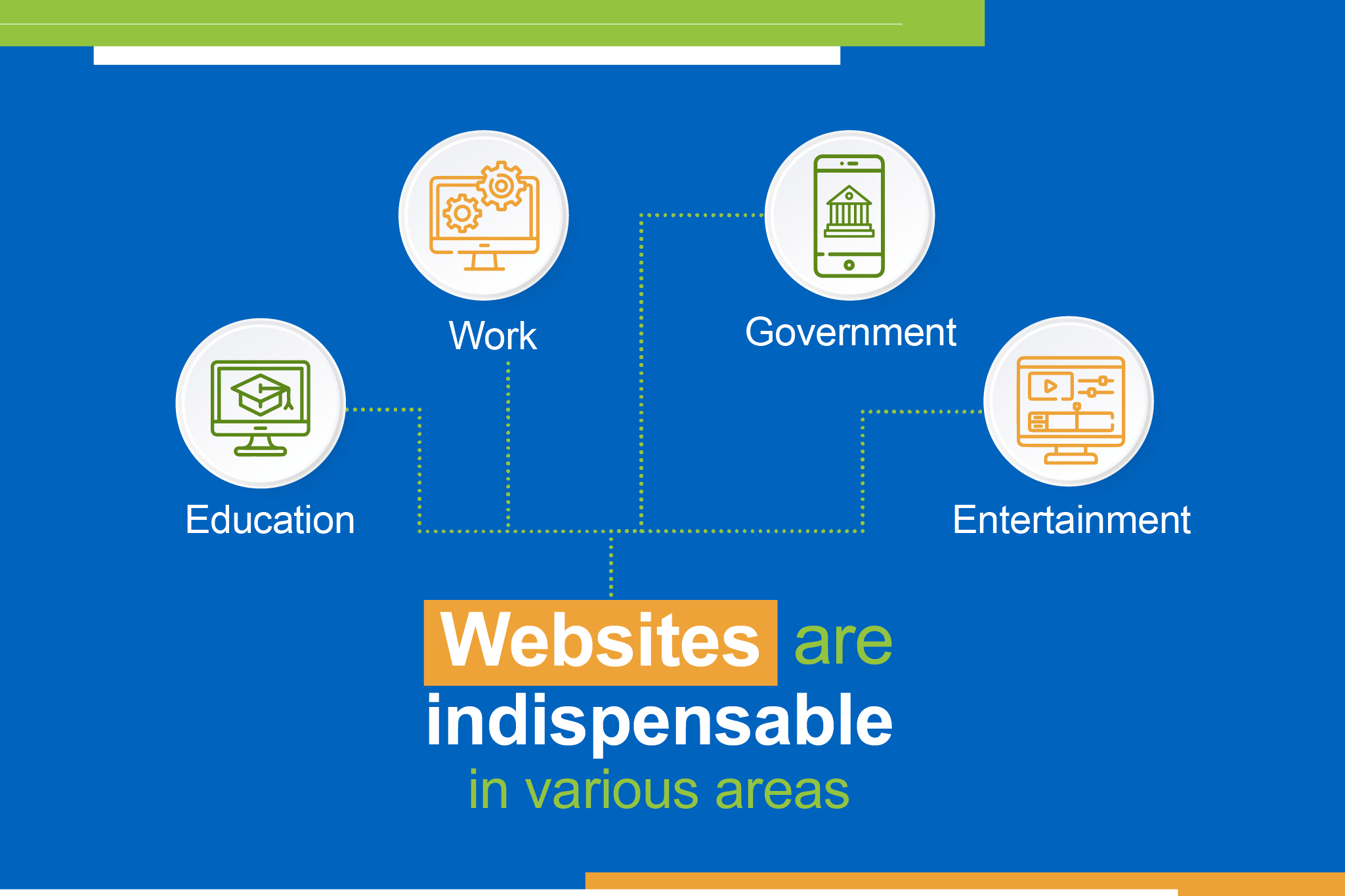I am text block. Click edit button to change this text. Lorem ipsum dolor sit amet, consectetur adipiscing elit. Ut elit tellus, luctus nec ullamcorper mattis, pulvinar dapibus leo.
Fifteen percent of the world’s population experience some form of disability, while the figure in Mexico is 21 million people, according to the census conducted by the National Statistics and Geography Institute (INEGI) in 2020.
Consequently, it is essential for businesses to work on website accessibility, since web browsing and reading also reaches audiences with some physical or mental impairment, as well as older adults, who are the demographic group with the highest growth rate worldwide and face certain challenges in the digital world.
To better understand this topic, Annie Carrillo, expert in digital contents accessible for different formats and founding partner of a HearColors, talks about the implication for businesses of having an accessible webpage.
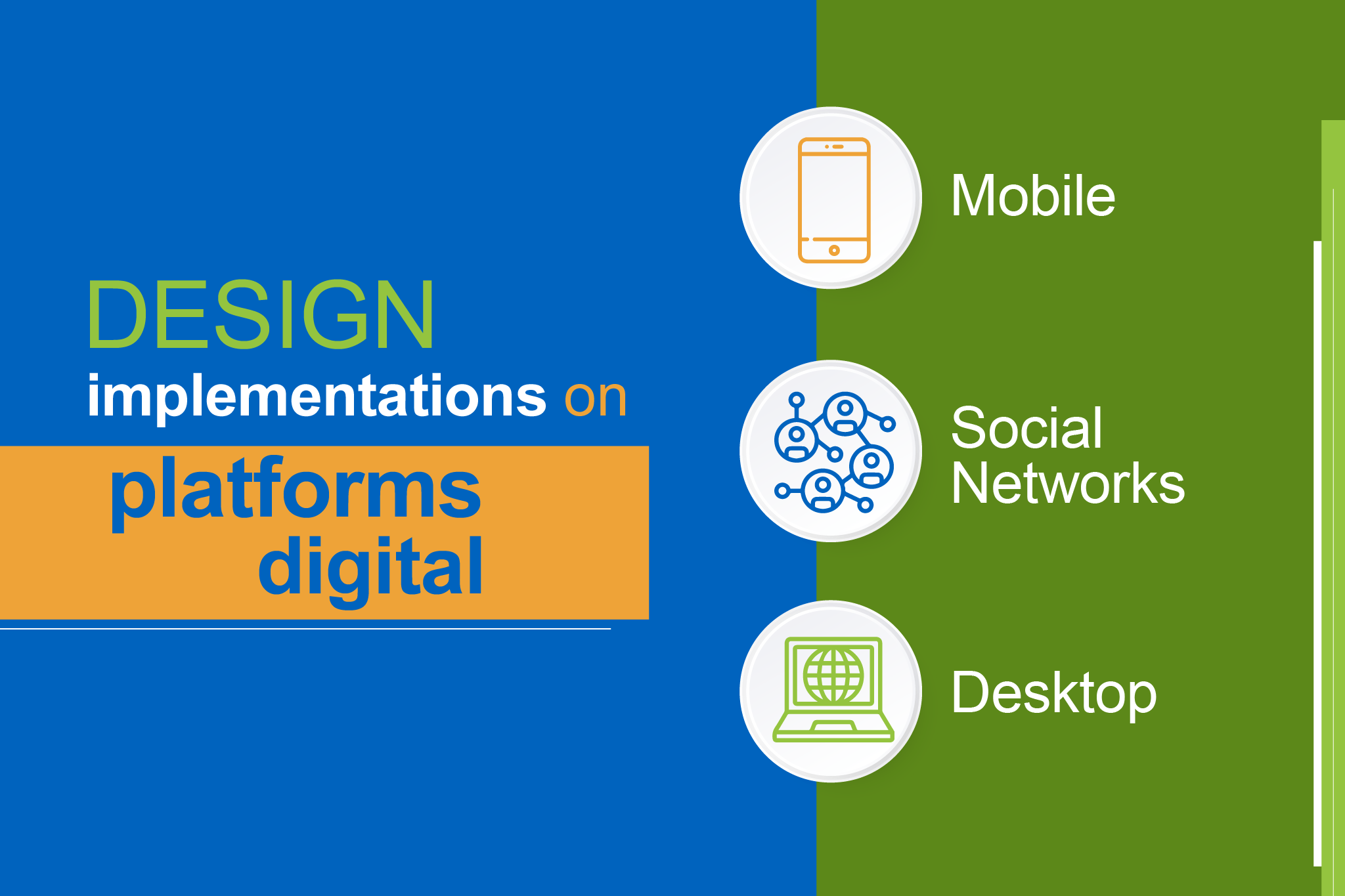
What is meant by web accessibility?
Web accessibility can be defined as the implementation of universal design in the digital world. Just as a ramp in a physical world permits wheelchair or crutch users, as well as people pushing strollers or pulling suitcases to access a building, in the digital world we can build ramps that will allow everyone, regardless of their age, to access technology.
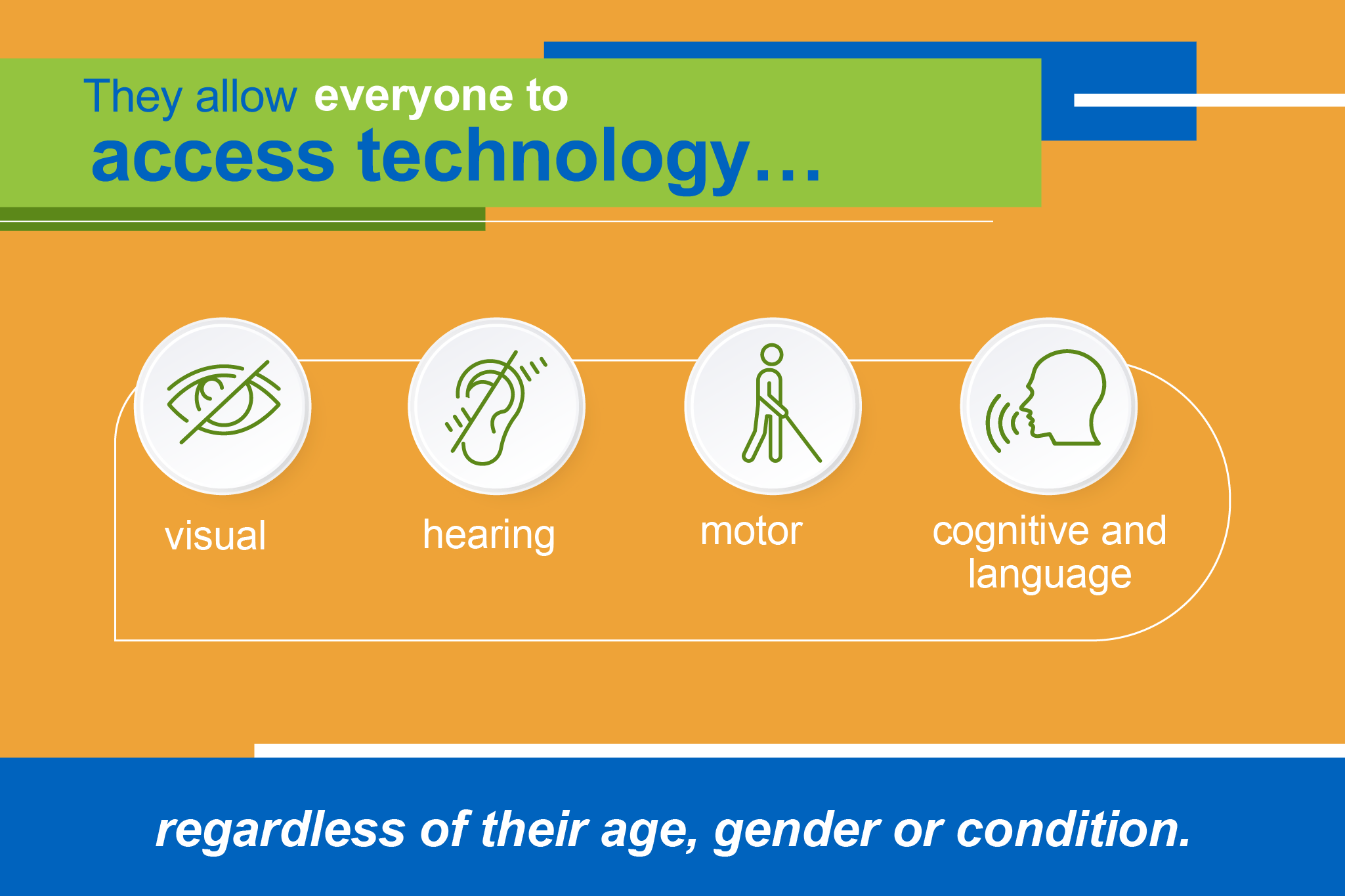
This process requires us to rely on the Web Content Accessibility Guidelines (WCAG). What are these guidelines?
Web Content Accessibility Guidelines (WCAG) are the international standard that includes the principles and requirements that must be implemented by those who develop and design websites, platforms, apps, and digital contents to be inclusive.
The standard was developed by the International World Wide Web Consortium (W3C), and it is recognized by many countries, including Mexico. In Europe, for instance, businesses offering products and services online are required by law to have websites and web content accessible to all the people.
How are businesses benefited by working on web content and website accessibility?
Implementing accessibility requirements has many advantages for companies.
Business opportunity. According to the “Global Economics of Disability 2020” report, the purchasing power of people with disabilities, together with their friends and family members, is 13 billion dollars –a market bigger than China. Nevertheless, only 4% of companies around the world offer inclusive services and products.
Opportunity to improve your organization’s perception. Having an accessible website and making it known can make a difference from competitors and prove that your organization has values and is committed to society. Today, consumers are looking for brands that are socially committed. A company with an accessible website is a business with social commitment.
Opportunity to have distinctive features and comply with standards. In Mexico, the NMX-R025-SCFI-2015 standard sets out in requirement 13 on labor equality and non- discrimination that work centers must have accessible websites and digital content, while the NMX R-099-SCFI-2018 standard, accessibility requirements for publicly procured Information Technology and Communication (ITC) products and services in Mexico, invites to review accessibility requirements whenever technology is purchased, so that public and private companies may have technology that can be used by all users.
Opportunity to increase your website compatibility. An accessible website works in different browsers, platforms or assistance technologies, which increases its compatibility.
Opportunity to increase your website SEO. A well labeled website, with a suitable semantic structure, will be easier to find in browsers for customers and prospects.
Opportunity to expand your business to other countries. In Canada and the European Union all the companies offering products and services online must have accessible websites; hence, it is an opportunity to open up in other countries.
Accordingly, companies that incorporate web accessibility in their processes are more likely to be seen as innovative and inclusive, since they reach more people with positive brand messages and meet emerging global legal requirements.
As users, how can we work on our content’s accessibility?
Most content creation platforms such as Google Docs, Microsoft Office or Adobe allow people who create documents, presentations or infographics to include accessibility requirements in their contents. For example, with just a click, we can incorporate in our document images an alternative text that we cannot see visually, but that screen readers used by blind and visually impaired people or illiterate people help us ensure that everybody can understand our contents.
Social networks are also extremely inclusive. We can also make sure that our information will be inclusive in Facebook, Instagram, YouTube, Twitter or LinkedIn. These websites allow, for example, to automatically create subtitles for our videos, which is essential for deaf or hearing-impaired people, people who do not speak Spanish as their first language or people in a highly noisy environment, but who want to consume our content.
HearColors is a Mexican company that was born with the mission to bring the Internet closer to everyone. The team in charge of the company’s website and content creation was trained to achieve accessibility of the Iberdrola México website. Additionally, websites are analyzed and monitored every year for continued accessibility.
With this joint work, at Iberdrola México we especially contribute to the SDG 10, reduced inequalities, by offering the same opportunities when accessing the company’s digital channels. Furthermore, the International Communications Union (ITU) has documented how information and communication technologies (ICT) are an essential tool to contribute to accelerate compliance with each of the 17 UN Sustainable Development Goals.
